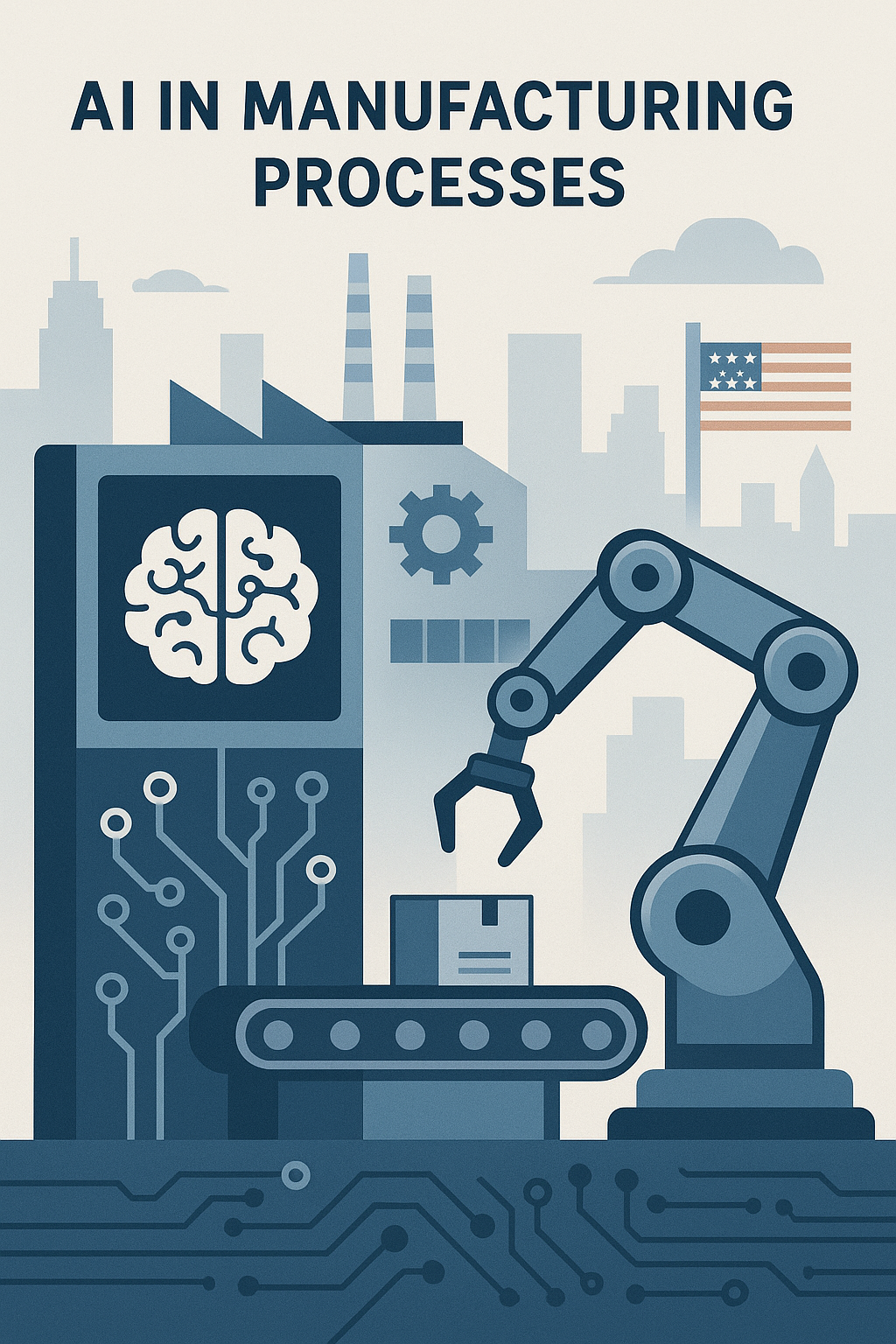
AI in Manufacturing Processes: Transforming U.S. Industry in 2025
Artificial Intelligence (AI) is revolutionizing the manufacturing sector across the United States. As we move into 2025, AI in manufacturing processes is no longer a futuristic concept—it’s a present-day necessity for companies seeking to boost efficiency, reduce costs, and stay competitive. This comprehensive guide explores how AI is reshaping manufacturing, the top applications, benefits, challenges, and what the future holds for American manufacturers.
Understanding AI in Manufacturing Processes
AI in manufacturing processes refers to the integration of intelligent algorithms, machine learning, and data analytics into various stages of production. These technologies enable machines and systems to learn from data, make decisions, and optimize operations with minimal human intervention.
Key Components of AI in Manufacturing
- Machine Learning (ML): Algorithms that learn from historical data to predict outcomes or detect anomalies.
- Computer Vision: Systems that interpret and analyze visual information from cameras and sensors.
- Robotics: Intelligent robots that perform complex tasks autonomously.
- Natural Language Processing (NLP): AI that understands and processes human language for applications like voice-controlled machinery.
TIP: Implementing AI doesn’t require a complete overhaul. Start by integrating AI into existing systems for targeted improvements.
Top 10 Applications of AI in Manufacturing Processes (2025)
AI is being deployed across a wide range of manufacturing operations. Here are the top 10 applications transforming U.S. factories today:
- Predictive Maintenance
- Quality Control and Inspection
- Supply Chain Optimization
- Production Scheduling
- Process Automation
- Energy Management
- Inventory Management
- Demand Forecasting
- Product Design and Prototyping
- Workplace Safety Monitoring
Side-by-Side Comparison Table: AI Applications in Manufacturing
| Rank | Application | Key Benefit | Example Use Case |
|---|---|---|---|
| 1 | Predictive Maintenance | Reduces downtime | Monitoring machine health |
| 2 | Quality Control & Inspection | Improves product quality | Automated defect detection |
| 3 | Supply Chain Optimization | Lowers logistics costs | Real-time route planning |
| 4 | Production Scheduling | Boosts throughput | Dynamic job allocation |
| 5 | Process Automation | Increases efficiency | Robotic assembly lines |
| 6 | Energy Management | Cuts energy expenses | Smart grid integration |
| 7 | Inventory Management | Minimizes stockouts | Automated reordering |
| 8 | Demand Forecasting | Aligns production & sales | AI-driven sales predictions |
| 9 | Product Design & Prototyping | Accelerates innovation | Generative design algorithms |
| 10 | Workplace Safety Monitoring | Enhances worker safety | Real-time hazard detection |
Benefits of AI in Manufacturing Processes for U.S. Companies
Integrating AI into manufacturing delivers a host of advantages:
- 📦 Increased Productivity: AI-driven automation accelerates production cycles and reduces manual labor.
- ✅ Enhanced Quality: Computer vision and ML algorithms catch defects early, ensuring higher product standards.
- 💰 Cost Savings: Predictive maintenance and optimized resource allocation lower operational expenses.
- 🏥 Improved Safety: AI-powered monitoring systems help prevent workplace accidents.
- 🌱 Sustainability: Smart energy management reduces waste and carbon footprint.
TIP: Focus on quick-win AI projects that deliver measurable ROI within 6-12 months to build internal support.
Challenges and Considerations When Adopting AI in Manufacturing
While the benefits are substantial, U.S. manufacturers face several challenges when implementing AI:
- Data Quality and Availability: AI systems require large volumes of accurate, real-time data.
- Integration with Legacy Systems: Many factories operate with outdated equipment that may not be AI-ready.
- Workforce Training: Employees need upskilling to work alongside AI technologies.
- Cybersecurity Risks: Increased connectivity can expose systems to cyber threats.
- Initial Investment: Upfront costs for AI adoption can be significant, though long-term savings often outweigh them.
TIP: Start with pilot projects and scale up gradually to manage risk and control costs.
The Future of AI in Manufacturing Processes: Trends for 2025 and Beyond
Looking ahead, AI will continue to drive innovation in U.S. manufacturing. Key trends include:
- Hyper-Automation: Combining AI, robotics, and IoT for fully automated production lines.
- AI-Driven Customization: Mass customization of products based on real-time consumer data.
- Collaborative Robots (Cobots): AI-powered robots working safely alongside humans.
- Edge AI: Processing data locally on devices for faster, real-time decision-making.
- Green Manufacturing: AI optimizing energy use and reducing environmental impact.
Conclusion: Embracing AI in Manufacturing Processes for a Competitive Edge
AI in manufacturing processes is transforming the U.S. industrial landscape in 2025. From predictive maintenance and quality control to supply chain optimization and energy management, AI delivers tangible benefits—boosting productivity, reducing costs, and enhancing safety. While challenges such as data integration and workforce training remain, the long-term advantages far outweigh the hurdles.
Manufacturers that embrace AI today position themselves for sustained growth, innovation, and resilience in an increasingly competitive global market. By starting with targeted AI applications and scaling up, U.S. companies can unlock new levels of efficiency and quality, ensuring their place at the forefront of the manufacturing revolution.